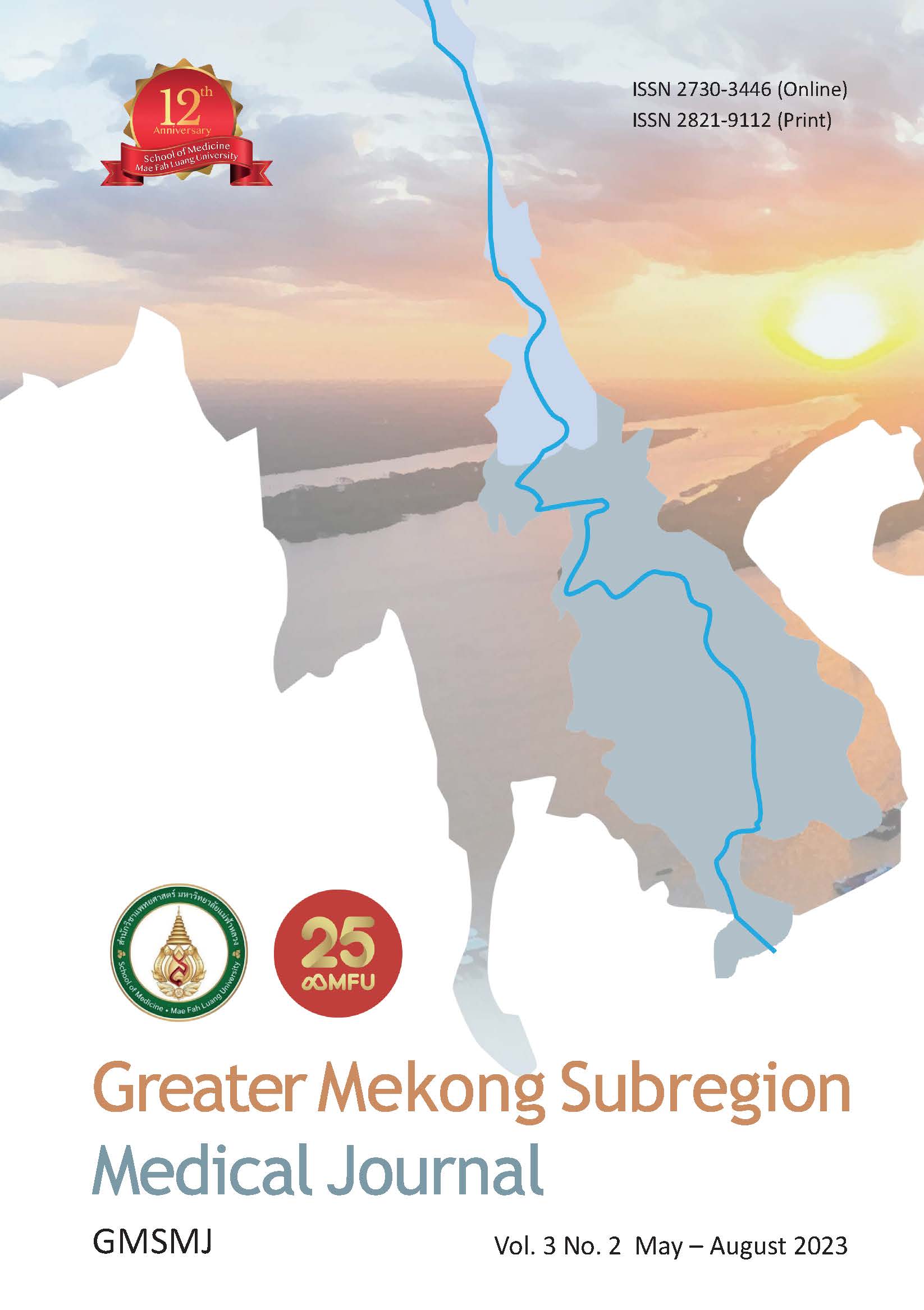Recreational Brackish Water Injury at Mangrove Lagoon Leads to Vibrio parahaemolyticus Acute Wound Infection with Peripheral Edema
Keywords:
Wound infection, Vibrio parahaemolyticus, Water leisure activity, Imported infectious diseaseAbstract
A wound infection with Vibrio parahaemolyticus was seen in a male who injured his right foot during a water leisure activity in Indonesia. It is known that the number of vibrio species in the sea is increasing due to the rise in seawater temperature accompanying global warming. Hand in hand with that rise in vibrio species and seawater temperature is the rise in the number of vibriosis cases. Hence, paying attention to the increase in imported cases of V. parahaemolyticus wound infection from tropical regions is necessary. For increased diagnostic accuracy, proper bacterial testing must be conducted based on the patient’s epidemiological information. We highlight the innocuous nature of the initial presentation and the importance of rapid testing for an accurate diagnosis to prevent potentially devastating sequela.
References
Abbott SL, Janda JM, Farmer III JJ. Vibrio and related organisms. In: Versalovic J, Carroll LC, Funke G, Jorgensen JH, Landry ML, Warnock DW. Manual of clinical microbiology, 10th ed. Volume 1. Washington, DC: ASM Press, 2011: 666-76.
Morris JG Jr. Cholera and other types of vibriosis: a story of human pandemics and oysters on the half shell. Clin Infect Dis. 2003; 37: 272-80. https://doi.org/10.1086/375600
Baker-Austin C, Oliver JD, Alam M, et al. Vibrio spp. infections. Nat Rev Dis Primers. 2018; 4: 8. https://doi.org/10.1038/s41572-018-0005-8
Clinical and Laboratory Standards Institute. Methods for antimicrobial dilution and disk susceptibility testing of infrequently isolated or fastidious bacteria; approved guideline, 3rd ed. Document M45-A3. Wayne, PA: Clinical and Laboratory Standards Institute; 2015.
Daniels NA, MacKinnon L, Bishop R, et al. Vibrio parahaemolyticus infections in the United States, 1973-1998. J Infect Dis. 2000; 181: 1661-6. https://doi.org/10.1086/315459
Tena D, Arias M, Alvarez BT, et al. Fulminant necrotizing fasciitis due to Vibrio parahaemolyticus. J Med Microbiol. 2010; 59: 235-8. https://doi.org/10.1099/jmm.0.014654-0
Payinda G. Necrotizing fasciitis due to Vibrio parahaemolyticus. N Z Med J. 2008; 121: 99-101.
Ralph A, Currie BJ. Vibrio vulnificus and V. parahaemolyticus necrotising fasciitis in fishermen visiting an estuarine tropical northern Australian location. J Infect. 2007; 54: e111-4. https://doi.org/10.1016/j.jinf.2006.06.015
Lim TK, Stebbings AE. Fulminant necrotising fasciitis caused by Vibrio parahaemolyticus. Singapore Med J. 1999; 40: 596-7.
Brennan-Krohn T, Pica N, Sandora TJ, et al. The Brief Case: Safe to go back in the water? Vibrio parahaemolyticus wound infection associated with brackish water. J Clin Microbiol. 2016; 54: 1414-5. https://doi.org/10.1128/JCM.02660-15
Vezzulli L, Brettar I, Pezzati E, et al. Long-term effects of ocean warming on the prokaryotic community: evidence from the vibrios. ISME J. 2012; 6: 21-30. https://doi.org/10.1038/ismej.2011.89
Newton A, Kendall M, Vugia DJ, et al. Increasing rates of vibriosis in the United States, 1996-2010: review of surveillance data from 2 systems. Clin Infect Dis. 2012; 54: S391-5. https://doi.org/10.1093/cid/cis243
International Commission on Microbiological Specifications for Foods (ICMSF). 23 Vibrio parahaemolyticus. In: Micro-organisms in foods 5. Characteristics of microbial pathogens. New York: Kluwer Academic/Plenum Publishers, 1996: 426-35.
Downloads
Published
How to Cite
Issue
Section
License

This work is licensed under a Creative Commons Attribution-NonCommercial-NoDerivatives 4.0 International License.






